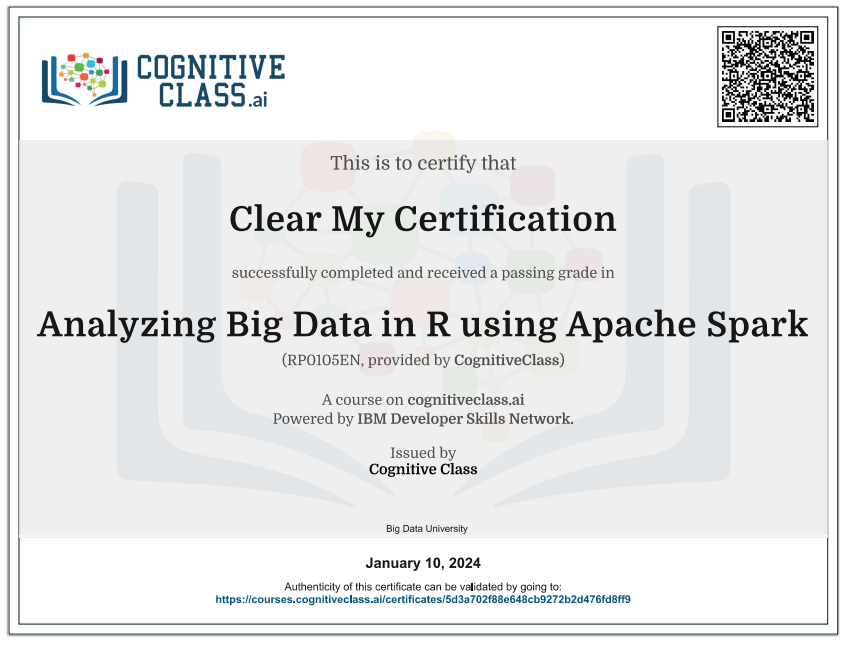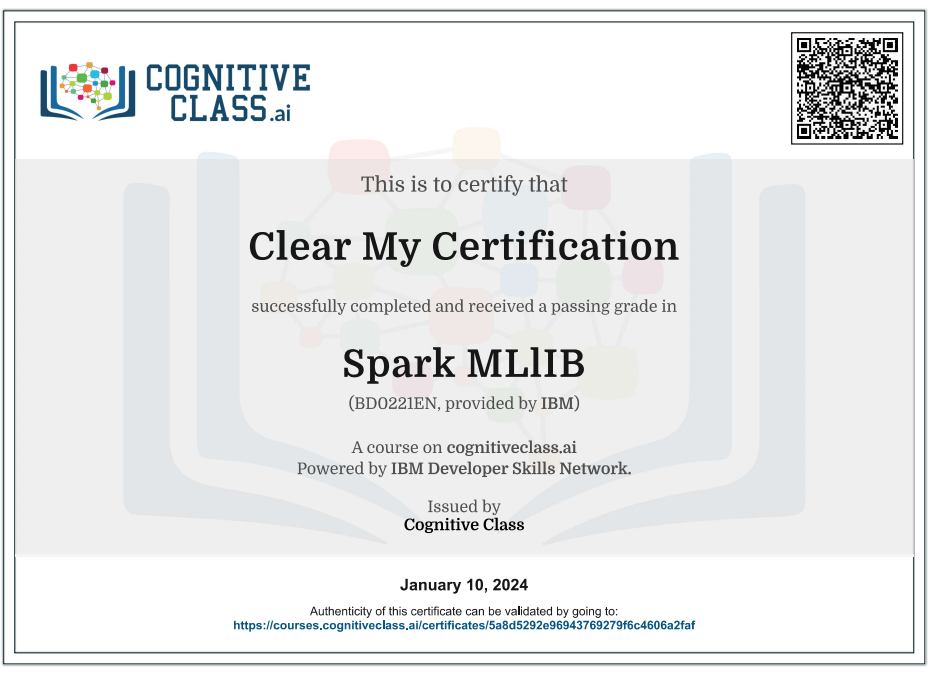Enroll Here: Prompt Engineering for Everyone Cognitive Class Exam Quiz Answers
Prompt Engineering for Everyone Cognitive Class Certification Answers

Module 1: Introduction to Prompt Engineering Quiz Answers – Cognitive Class
Question 1: Can computers inherently understand ambiguous instructions like humans do?
- Yes
- No
Question 2: Why do we historically use programming languages instead of plain English to instruct computers?
- English is easier for computers to understand.
- English is less ambiguous than programming languages.
- Programming languages allow for faster execution of tasks.
- English is more ambiguous than programming languages for providing specific instructions.
Question 3: What does the term ‘zero-shot’ prompting mean in the context of Large Language Models (LLMs)?
- The model is provided with multiple examples before making a prediction.
- The model makes a prediction without any prior examples.
- The model is trained with zero data.
- The model takes zero seconds to produce an answer.
Question 4: Naive or standard prompts typical use few-shots prompting.
- True
- False
Question 5: Is the data that AI models like LLMs are trained on always flawless?
- Yes, corportations spend billions ensuring such is the case.
- No, despite best efforts, we can’t escape flawed and biased information.
Module 2: Getting Started with Prompt Engineering Quiz Answers – Cognitive Class
Question 1: The Naive Approach to prompting the AI often results in overly generic and broad responses.
- True
- False
Question 2: Is the Persona Pattern used to make the AI adopt a specific character or identity for more customized results?
- Yes
- No
Question 3: Which of the following best describes the “Interview Pattern”?
- The AI asking the user about its training data.
- The AI interviewing the user to gather enough specific details for a customized answer.
- The user providing the AI with all details at once, without the AI asking any questions.
- The AI asking random questions regardless of the topic.
Question 4: Why would one combine the Persona Pattern with the Interview Pattern?
- To get more entertaining replies from the AI.
- To make the AI’s responses impersonal.
- To get both the viewpoint of an expert character and a detailed answer specific to us.
- There’s no practical reason to combine them.
Question 5: When requesting the AI to craft a blog post for the “Prompt Engineering for Everyone” course using the Interview Pattern, what did the AI first ask for?
- The course’s price and duration.
- Key information about the course, such as target audience and unique selling points.
- The course’s difficulty level.
- User reviews and feedback about the course.
Module 3: The Chain-of-Thought Approach Quiz Answers – Cognitive Class
Question 1: What were the two phrases mentioned that can be added to the prompt to solicit better answers by doing step-by-step reasoning?
- “Let’s solve it.” and “Break it down.”
- “Let’s think step by step.” and “Let’s work this out in a step-by-step way to be sure we have the right answer.”
- “Solve methodically.” and “Divide and conquer.”
- “Think deeply.” and “Give a comprehensive answer.”
Question 2: Using the Chain-of-Thought approach always requires retraining the AI model.
- True
- False
Question 3: Does using the Zero-Shot CoT prompting technique always produce short answers?
- Yes
- No
Question 4: In the provided example about space exploration, why was the Chain-of-Thought approach used?
- To get a quicker answer.
- To focus only on the moon landing.
- To get a more comprehensive and detailed answer by breaking down various facets of the topic.
- To get a brief summary.
Question 5: What is one downside to using the Chain-of-Thought approach as mentioned in the content?
- It’s going It requires the AI to be retrained.
- to make us an offer we can’t refuse.
- It always provides a concise answer.
- It may require knowledge of the subject or research, making it time-consuming.
Module 4: Advanced Techniques Quiz Answers – Cognitive Class
Question 1: According to researchers, the Tree-of-Thought (ToT) approach achieved a 74% success rate in the Game of 24, while Chain-of-Thought only achieved 4%.
- True
- False
Question 2: What does the Tree-of-Thought (ToT) prompting encourage the AI to do?
- Follow a linear sequence of thoughts.
- Build upon intermediate thoughts and explore branches.
- Think really hard.
- Follow a fixed set of instructions.
Question 3: Which of the following can be considered a benefit of the ToT approach?
- It always gives a concise answer.
- It provides multiple viewpoints akin to brainstorming.
- It focuses on a singular expert perspective.
- It reduces the depth of the answer to make it more generic.
Question 4: What purpose does controlling verbosity serve in the model’s response?
- To increase the length of every answer.
- To modify the depth of detail in the response.
- To improve the accuracy of the answer.
- To limit the model to short responses only.
Question 5: In the Nova System, who is responsible for ensuring the conversation remains on topic?
- The Critical Evaluation Expert (CAE).
- The Critical Execution Expert (CAE)
- The User.
- The Discussion Continuity Expert (DCE).
Introduction to Prompt Engineering for Everyone
Prompt engineering is a technique used in the context of natural language processing (NLP) and machine learning (ML) to design effective and precise prompts for language models. It involves crafting input queries or instructions in a way that elicits the desired responses from a language model. This approach is commonly applied to fine-tune or guide the output of large pre-trained language models.
- Clarity and Specificity:
- Prompts should be clear and specific to convey the desired task or information to the model. Ambiguous prompts may lead to unpredictable or irrelevant outputs.
- Contextual Information:
- Including relevant context in the prompt helps the model better understand the user’s intent. Providing necessary details or background information can enhance the quality of generated responses.
- Instructions and Formatting:
- Explicit instructions guide the model on how to approach the task. Including formatting cues, such as specifying the desired format for the answer, can improve the output’s coherence.
- Examples and Demonstration:
- Providing examples within the prompt can help the model understand the desired response style or format. Demonstrating the expected output can assist the model in learning the task.
- Iterative Testing:
- Prompt engineering often involves an iterative process. Testing different variations of prompts and refining them based on model performance helps in finding the most effective formulation.
- Fine-Tuning:
- For certain applications, fine-tuning the model on domain-specific data with custom prompts can improve performance. This is particularly useful when the model needs to specialize in a particular industry or domain.
- Handling Ambiguity and Edge Cases:
- Anticipating potential ambiguities or edge cases and addressing them in the prompts can help improve the model’s robustness and accuracy in various scenarios.
- Length Considerations:
- Depending on the model and the task, the length of the prompt may impact performance. Some models have limitations on input length, so concise yet informative prompts are essential.
- Prompt Diversity:
- Experimenting with different prompt styles and structures can help in understanding how the model responds to various inputs. This can be valuable for uncovering the model’s capabilities and limitations.
- Domain Adaptation:
- If the task involves specific domains, adjusting the prompts to be more aligned with the domain language can improve performance. This may include incorporating industry-specific terms or jargon.
In summary, prompt engineering is a crucial aspect of working with NLP models. By carefully designing prompts, developers and researchers can harness the capabilities of these models to achieve desired outcomes in a wide range of applications.
 Clear My Certification All Certification Exam Answers
Clear My Certification All Certification Exam Answers



